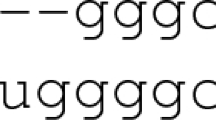Abstract
We present new results in crossword composition, showing that our program significantly outperforms previous successful techniques in the literature. We emphasize phase transition phenomena, and identify classes of hard problems. Phase transition is shown to occur when varying problem parameters, such as the dictionary size and the number of blocked cells on a grid, of large-size realistic problems.
Access this chapter
Tax calculation will be finalised at checkout
Purchases are for personal use only
Preview
Unable to display preview. Download preview PDF.
Similar content being viewed by others
References
Beacham, A., Chen, X., Sillito, J., van Beek, P.: Constraint Programming Lessons Learned from Crossword Puzzles. In: Stroulia, E., Matwin, S. (eds.) Canadian AI 2001. LNCS (LNAI), vol. 2056, pp. 78–87. Springer, Heidelberg (2001)
Samaras, N., Stergiou, K.: Binary Encodings of Non-binary Constraint Satisfaction Problems: Algorithms and Experimental Results. JAIR, 641–684 (2005)
Katsirelos, G., Bacchus, F.: Generalized NoGoods in CSPs. In: Proc. of 20th AAAI, pp. 390–396 (2005)
Smith, B.: Phase Transition and the Mushy Region in Constraint Satisfaction Problems. In: Proc. of 11th ECAI, pp. 100–104 (1994)
Gent, I.P., MacIntyre, E., Prosser, P., Walsh, T.: Scaling Effects in the CSP Phase Transition. In: Proc. of 1st CP, pp. 70–87 (1995)
Mazlack, L.J.: Computer Construction of Crossword Puzzles Using Precedence Relationships. Artificial Intelligence, 1–19 (1976)
Ginsberg, M.L., Frank, M., Halpin, M.P., Torrance, M.C.: Search Lessons Learned from Crossword Puzzles. In: Proc. of 8th AAAI, pp. 210–215 (1990)
Meehan, G., Gray, P.: Constructing Crossword Grids: Use of Heuristics vs Constraints. In: Proc. of R & D in Expert Systems, pp. 159–174 (1997)
Cheeseman, P., Kanefsky, B., Taylor, W.M.: Where the Really Hard Problems Are. In: Proc. of 12th IJCAI, pp. 163–169 (1991)
Gent, I.P., Walsh, T.: The SAT Phase Transition. In: Proc. of 11th ECAI, pp. 105–109 (1994)
Author information
Authors and Affiliations
Editor information
Rights and permissions
Copyright information
© 2008 Springer-Verlag Berlin Heidelberg
About this paper
Cite this paper
Anbulagan, Botea, A. (2008). Crossword Puzzles as a Constraint Problem. In: Stuckey, P.J. (eds) Principles and Practice of Constraint Programming. CP 2008. Lecture Notes in Computer Science, vol 5202. Springer, Berlin, Heidelberg. https://doi.org/10.1007/978-3-540-85958-1_40
Download citation
DOI: https://doi.org/10.1007/978-3-540-85958-1_40
Publisher Name: Springer, Berlin, Heidelberg
Print ISBN: 978-3-540-85957-4
Online ISBN: 978-3-540-85958-1
eBook Packages: Computer ScienceComputer Science (R0)




